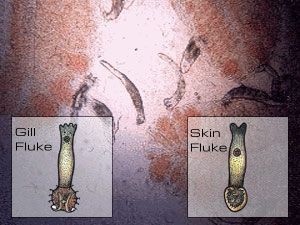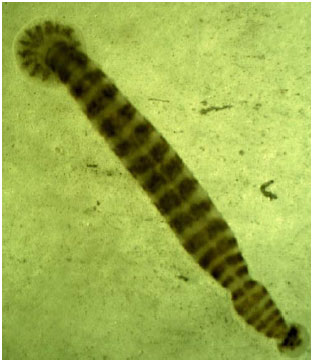Uncategorized
Potassium Permanganate-Superb disinfectant and parasiticide, from Koi Health and Disease (part 1)
Potassium permanganate can be extremely effective against flukes, trichodina, bacterial ulceration, and fungal infections. Caution must be used, however, as the toxic level of this compound is very close to the therapeutic level. When dosing, the volume estimate of the system must be exact and care should be taken when measuring out the compound.
While salt (AL8353) can be extremely effective at safely treating many fish parasites, it falls short against some strains of flukes and Asian trichodina. It is also not very effective against significant bacterial or fungal infections other than as a stress reducer. This is where potassium permanganate may be useful.
Potassium permanganate (KMnO4) is a caustic alkali that dissociates in water to form both the permanganate ion (MnO4) and manganese dioxide (MnO2), as well as liberating nascent oxygen molecules. The primary effect is powerfully oxidative.
It has been reported that the permanganate ion is the active agent that kills parasites by destroying their cell walls through oxidation. Other literature shows how the manganese dioxide molecule forms protein complexes on the surface epithelium (outside surface of the body),which confers the characteristic brown color seen on fish and fins. These protein complexes also form on the respiratory structures of fish parasites, killing them.
Potassium permanganate boasts an impressive list of organisms killed. Included are saprolegnia (protozoan often called “cotton molds”), costia (flagellate), chilodonella (Ciliated protozoan), ich (protozoan), trichodina (peritrichous ciliates), gyrodactylus (skin and gill flukes), dactylogyrus (gill flukes), argulus (fish lice), piscicola (fish leech), lernea (anchor worm), as well as columnaris (“cotton wool disease” or “cotton mouth disease”) and other bacteria including edwardsiela, aeromonas, psedomonas (ulcer disease), plus algae and ambiphrya (protozoans).
Unfortunately, it has been reported that argulus, lernea, and piscicola only respond to potassium permanganate when used as a dip which means that immature forms of these parasites may remain in the environment. Other reports indicate that costia and chilodonella may also resist potassium permanganate unless used as a dip.
Potassium permanganate as a dip is highly caustic and is not recommended. It may result in coagulative necrosis (areas of white, dead tissue) on the fin tips and severe damage to the gills which may cause death in fish as much as several weeks later.
Potassium permanganate is much safer when used as a continuous treatment at a rate of 2 to 4 ppm in the water column.








